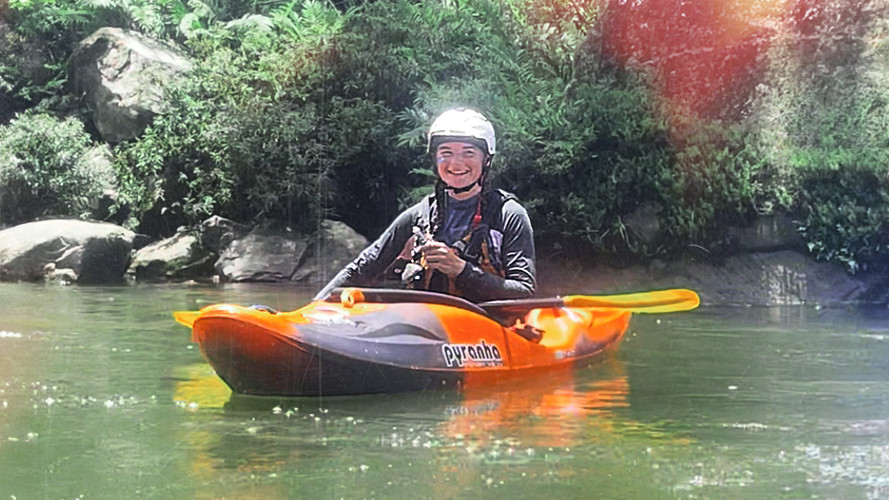Brooke's Kayaking Adventure in Ecuador: A Western Canoe Kayak Ambassador's Journey
Posted by Brooke on 2024 Feb 23rd
Intro
I’m Brooke, the newest addition to the Western Canoe Kayak ambassador team! I recently spent seven weeks kayaking and traveling in Ecuador.
After I finished the two year Adventure Studies Diploma in May, I knew I was going to go back to TRU for two more years and turn the diploma into a degree. I also knew that I didn't want to go back right after the summer ended. I had a busy spring and summer that led up to my trip in the fall. I started my 2023 season on Vancouver Island in March and from there had a full spring with trips to Clearwater, Calgary, Washington, Oregon, and California. Then I moved up to Valemount for a summer full of raft guiding and kayaking on the Fraser. I wanted to keep kayaking before settling back into study mode.
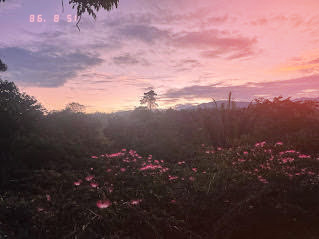
Choosing Ecuador: Why Ecuador Became the Destination for Brooke's First International Trip
I had heard many amazing things about paddling in Ecuador, from mentors, friends, and the internet. After a bit more research I decided it would be the perfect place for my first international kayak trip. I went to Ecuador with big expectations and plans and wasn’t disappointed. I learned some great things about traveling, kayaking, and pacing myself. Read on for a glimpse into the world of the paddlers paradise, commonly known as Ecuador!
Note that this is my experience from Oct 23 to Dec 13, 2023. I have been keeping up with the recent lockdown/news from the country (Jan 9 state of emergency). It looks like most incidents are taking place far from where kayakers tend to hang out. It is important to research the current state and make your own informed decisions.
The First International Kayaking Adventure: Smooth Sailing from Start to Finish
The trip was my first time traveling outside North America as a kayaker, and it went smoothly! The first adventure of kayaking internationally is of course getting there in one piece. My friend Michael and I decided to bring boats down with us and sell them at the end of the trip. Our transportation went smoothly!
We arrived at the Air Canada check in desk in Vancouver with lots of time before our flight. First, the agent asked me if it was a kayak or a canoe. I told them it was a kayak. They said that kayaks were allowed but canoes were not, which might raise some questions about what Air Canada thinks about a kayak converted to a C1. Where does a kayak end and canoe begin? Then they measured my boat and told me that it wouldn't be allowed because it was too wide. On their website it says kayaks must be under 18 inches wide and under 29 inches tall. I propped my boat up on its side and the width became the height and the height became the width. They shrugged their shoulders, charged me $200 and helped me take it to the oversize luggage drop off. They sent it through the security x-ray and I was set! Inexplicably Michael had the same check-in process, but they only charged him $100. At that point I was happy to have it on the plane.
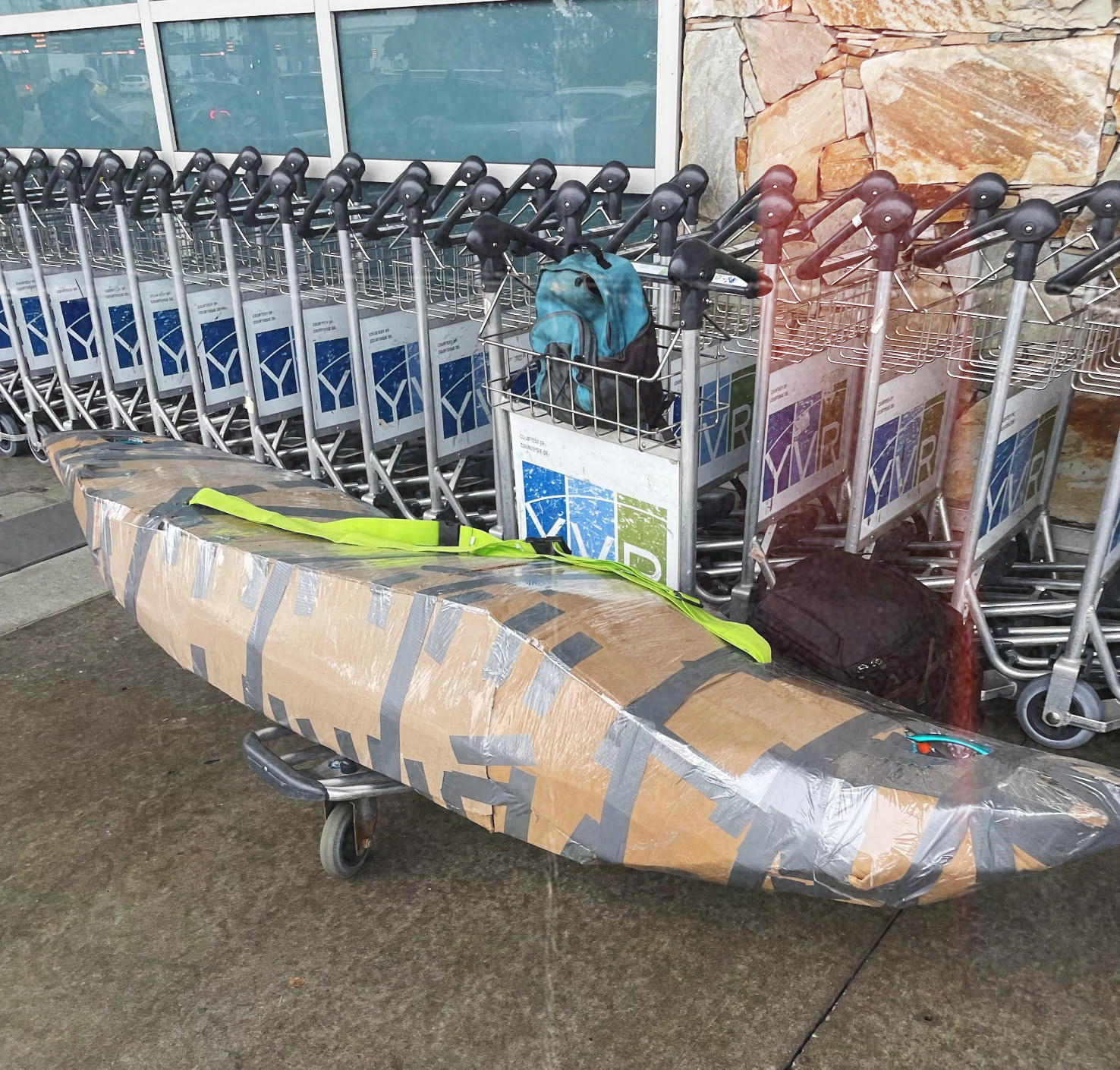
Smart Travel Tips: The Value of Using Apple Airtags for Peace of Mind
I bought an Apple Airtag and taped it inside my kayak the night before we left. I’d highly recommend one as it was super reassuring to be able to check that the kayak was on the plane before we took off. Leaving Vancouver at 9am, and arriving at our first destination, Baeza, took 24 hours. We flew from Vancouver to Toronto, had 3 hours of layover, then flew to Bogota Colombia, for a two and a half four layover, then finally a two hour flight to the capital city of Ecuador, Quito. At the Quito airport, we had pre-arranged a taxi to pick us up and drive us to Baeza. If you contact the hostel you are staying with, they can usually help you arrange a ride.
The process of getting to Ecuador was a long one but it went smoothly. I would highly recommend an Airtag for your luggage and organizing a taxi prior to landing for the smoothest travel.
Arrival and Early Season Kayaking in Ecuador
We arrived in Ecuador on October 23, which is quite early in the kayak season and usually not recommended for two reasons. Firstly, it is (normally) still the rainy season and rivers are too high to paddle. Secondly, there aren't many other boaters around that early. The Amazon was heavily impacted by a drought this past fall, which decreased the amount of rainfall on the eastern slope of the Andes in Ecuador. This meant we started with low water in the Quijos Valley.
We had the opportunity to familiarize ourselves with a handful of different sections of rivers at low water. As the weeks passed, the rain steadily increased and so did the number of kayakers. About halfway through November there were a few different groups of cool people from all around the world to paddle with. I can certainly imagine how the hostels would fill up later in December and through January. If you are looking to meet lots of new friends I would recommend going in December and January.
The Kayaking Community and Local Hospitality
The kayaking community in Ecuador is well set up to host international kayakers. The locals are friendly and welcoming. The taxi shuttles are sometimes too good to believe. It was so convenient to be able to phone them directly from the hostel, and wait only minutes for them to be there with their truck, ready to take us to the river. Many of the taxi drivers know where to meet you for put ins and take outs, have their own straps or rope to tie your boats in, and are helpful with loading and unloading. Tips for good service are encouraged!
One of the hurdles we encountered was talking to the drivers in Spanish on the phone. I went down with really no Spanish background. I would highly recommend practicing the language before you head down, even if it's just a few weeks of Duolingo or Rosetta Stone. The more you know the better off you'll be, there were hardly any locals that spoke English.
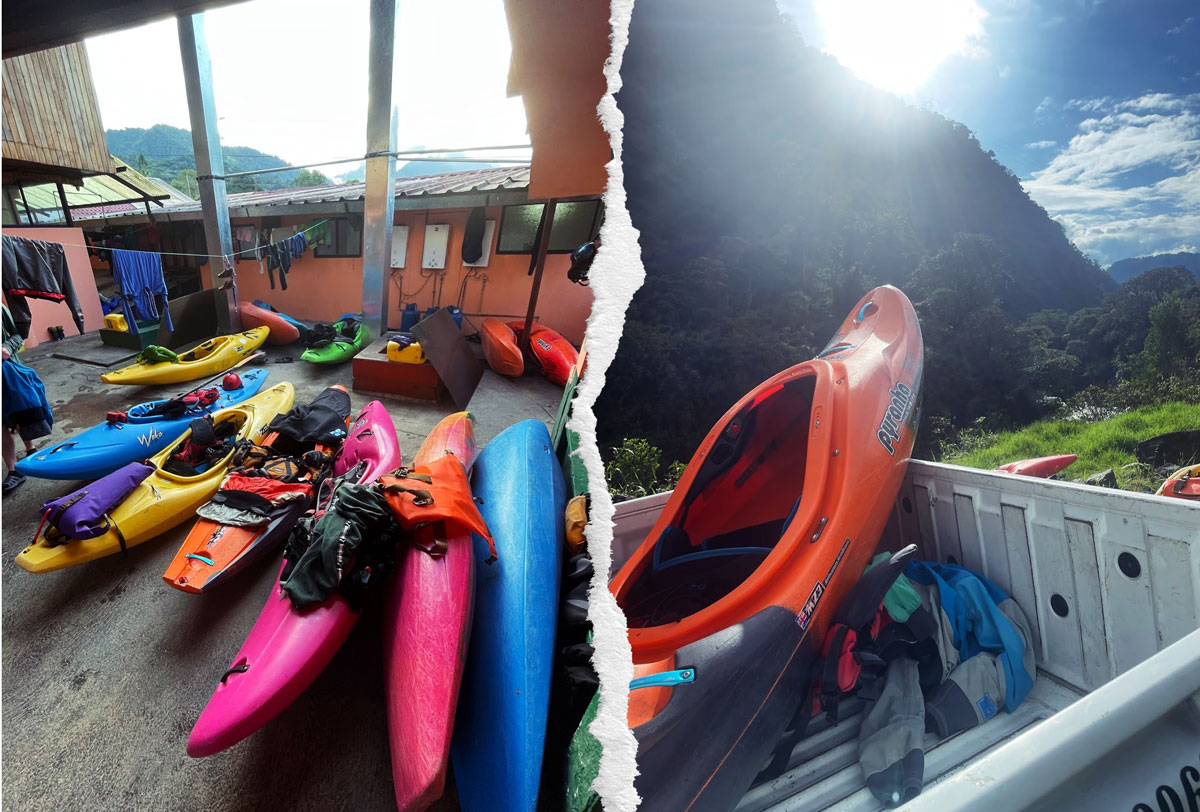
Navigation and River Information
At the start of the trip when we were exploring new sections of the rivers by ourselves we used the guidebook (The Kayakers Guide to Ecuador) and an app called whitewater guide. We were able to find the put ins and take outs fairly easily with their help, and the ratings of the rivers seemed pretty accurate to me. We also used a facebook page called “Ecuador Water Level Report” for info/beta. There are no gauges on the rivers in Ecuador so kayakers, taxi drivers, and other locals help out by posting photos of the river. Another helpful facebook page is called “Ecuador kayaking community, gear swap, river reports, levels etc.” It is used to post changes to rivers (wood etc), find people to share rides with, report gear they have lost or found on the river, and many other things. Both pages were very helpful to follow!
It was amazing to be able to paddle in November and December in a rashguard. The water was warmer than any I've paddled in BC. The consistent warmth from the equatorial sun was glorious. I spent most of the trip in my dry top and neoprene leggings. I had a few thin long sleeve base layers I wore under my dry top. I wish I had brought a hydroskin style shirt, I would have used it frequently. It was never cold enough for a full drysuit and I was happy I didn't bring mine. Something that someone wouldn't want to forget is a 10-15L drybag that fits in your boat. With the nature of the taxi shuttles, it works best to bring your dry clothes on the river and get changed at the takeout while you wait for your ride.
Overall, traveling in Ecuador went smoothly and we had a great time. The people were welcoming, logistics were simple, and rivers were beautiful.
Settling into Ecuador: First Impressions and the Quijos River
Check out part one to hear about some of the travel logistics and tips!
On the first day we settled into Cabañas Tres Rios on the bank of the Quijos River. We had a beautiful breakfast of fresh fruit, yogurt, Jugo del Dia (Juice of the day), eggs, and toast with marmalade. Breakfast is included at Tres Rios but if you were to find a breakfast place it would be about 2.50. After the full previous day of travel, I took a much needed nap, and when I woke up there was a group going out for a lap. I joined the group and we headed to the river! Tres Rios is right on the Quijos river. We all headed up to put in at bridge 3.5 on the Quijos and took out at Tres Rios.
In the following days, Michael and I continued to explore many more beautiful class 3 sections surrounding Baeza. Paddling through the jungle ecosystem for the first time was so cool. It was so fun to explore new rivers, and rapids, while also exploring the jungle and new plants and animals.
Many of the rivers we were on in Ecuador had a different style of paddling than I was used to. There were many more boulder gardens and fewer medium-large volume rivers. In the Quijos Valley we explored the Quijos, Cosanga, Borja rivers. The Quijos has many different sections that change style as you head downstream. It features lower volume moves at the start and and the volume grows significantly as you head down to the Chaco/Bon Bon sections. The Cosanga is unique to most rivers in Ecuador, as the higher sections near town are easier class II/III and as you head downstream it gets progressively harder. The Borja is great when all the other options are too high. The class III creek fills in with heavy rains and is great splashy bumpy fun.
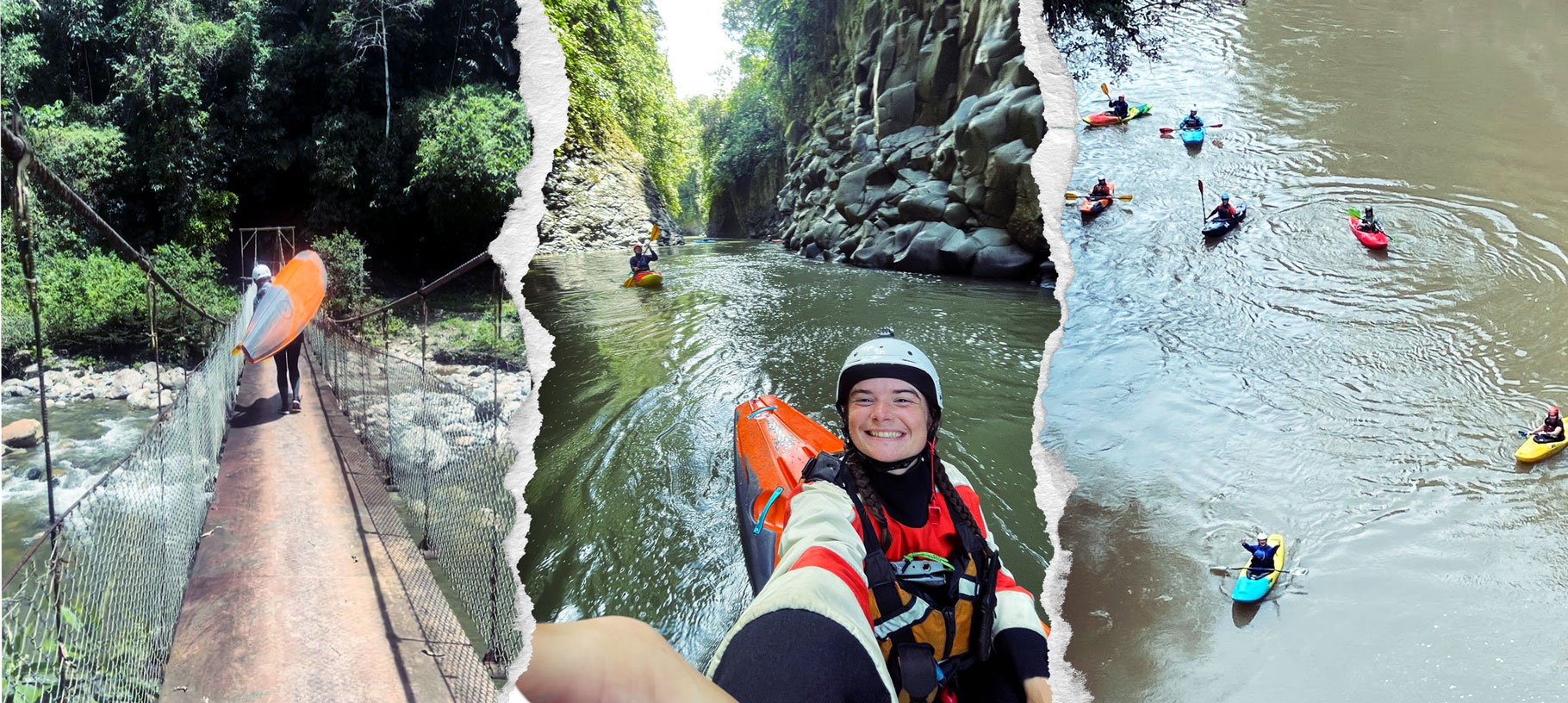
Bridge 2-4 on the Quijos quickly became one of my favourite runs. It is a great section of continuous class IV, you can run it super low or pretty high, and the fact that it is close to town means taxi rides are quick and inexpensive (less than $10 USD round trip). We also spent a week in the city of Tena and ran the Jatunyacu, Piatua, Misawuhali, Inchinyaki, middle Tena, and Jondachi/Holin. Tena is a bigger city than Baeza, this meant accommodations and food was less expensive, but all the river options are a bit further away making taxi rides cost a little more. The Piatua was definitely a highlight of our time in Tena. We stayed at Hotel El Oso Perezoso, it was super convenient for paddling the Misahualli, as it is right on the river. It was a bit harder to nail the right water level in Tena for each river, but we enjoyed them all Regardless.
There were so many amazing rivers to paddle in Ecuador. Logistics are simple enough, the weather is warm, and the people are stoked. I couldn't have asked for a better environment to spend my fall.
Reflections and Personal Growth: Kayaking with Ambition
I left home with some of the more challenging rivers on my mind. I had gone down with pretty big ambitions of the Oyacachi, Cheesehouse, the upper Jondachi and other class IV/V gems of Ecuador.
Before I left for Ecuador, my year was full of whitewater adventures all over BC and California. I had already paddled 114 days in 2023. Earlier in the summer when I was raft guiding in Valemount, I was surrounded by an amazing crew. They had all been paddling longer than me, and led me through every new river and rapid.
Paddling with this crew and other groups I had been a part of before, was always an amazing time. I had gotten used to having other people around for encouragement and enthusiasm. I found myself learning from everyone's opinions about lines and moves. It is always nice to know that a big crew is looking out for you. When you're surrounded by people that have more river experience than you, you spend a lot more time listening to how they approach each run and rapid. Michael and I had only paddled with each other three times in BC before we left for Ecuador. This meant while we were figuring out the rivers and local culture, we were also learning about each other's style of kayaking and building up our trust in each other. After spending a bunch of time on class III, we took on more challenging class IV water. It was fun to learn the lines and feel myself run them cleaner and cleaner with each lap. Learning the lines and improving my technique on each lap was inspiring. As the weeks rolled on I ran the class 4 sections (b2b, lower cosanga etc) as often as I could. I became more confident on a wider range of rivers, in my boat scouting, and definitely in boofing.
An important lesson I learned is that paddling with one other person is a totally different dynamic than paddling with a larger crew. Paddling with just a partner requires more frequent decisions, trust in the other person, and it’s just plain harder. Our skills and knowledge of each others preferences in how to navigate each river grew. We soon found ourselves coming up with the same solutions about rapids and lines. I was kayaking nearly every day and getting lots of hours on the rivers. About halfway through the trip Michael, Issac (a good friend we met on the river), and I decided to go to the Galapagos Islands for a week. This trip offered a moment of reflection where I thought a lot about kayaking, how the trip had gone so far, and what I wanted out of the remainder of the trip.
After we got back from the Galapagos I was more excited than ever to get on the harder sections of rivers, but for some reason, the vibes felt off and my stoke was low. I had not experienced a feeling as strong as it before, and it led to a few days of being confused as to why I felt off. I finally realized that I was simply tired. I had been kayaking for eight solid months by that point. I hadn't taken a break longer than a week or two since March. When I realized this, I pumped the brakes and made a point of taking more rest days than I had in the first half of the trip. The days that I was on the river became even more fun and valuable because I was being more intentional about listening to how my body felt. As they say “the best boaters are the ones having the most fun.” I wasn’t having fun when I was paddling every day so I had to take some days off to be the best boater I could be. The trip taught me lots about travel and kayaking, but I think the best lessons came from my time off the river when I was reflecting about balance and what kayaking means to me. I’m happy I took action to honour the way I felt and I am excited to bring this mindset to this spring!
Resources and Community: Sharing the Kayaking Experience
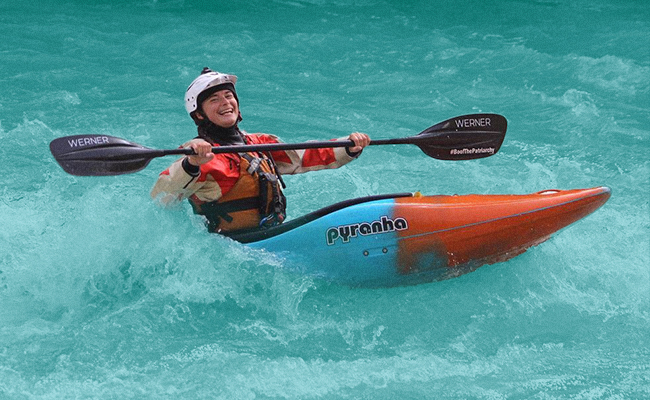
Join Me on Instagram
For more adventures and behind-the-scenes moments, follow me on Instagram at @brooke_zel.3. Let's continue the journey together!

